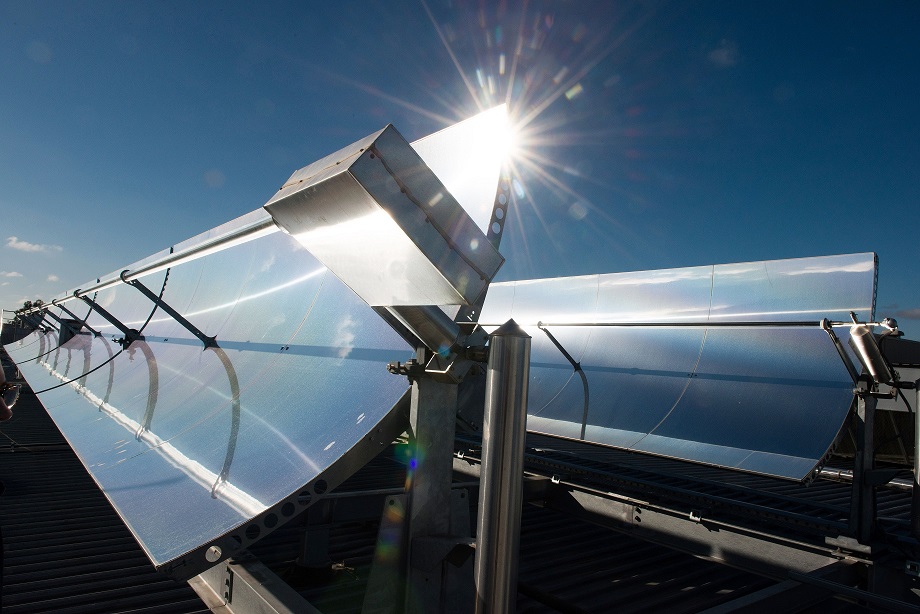We have developed new solar cooling technology that will change the way energy is used on a commercial scale, increasing energy efficiency while driving down business costs.
The challenge
Reducing commercial energy use
Building energy demands can often mean high energy consumption and high costs. Large commercial spaces such as shopping centres and hotels can use around 60 per cent of their total energy use for Heating Ventilation and Air Conditioning (HVAC). So how can commercial buildings operate more efficiently while delivering cost savings?
Our response
Investing in new solar technology to drive efficiency
We have developed a cutting-edge solar-powered system using concentrating solar thermal technology that can cool Australian commercial buildings, achieving greater energy efficiency.
Operating at Stockland Wendouree Shopping Centre in Ballarat, Victoria, the demonstration system produces solar heat energy used to power the air conditioning system. The closed-loop system uses two ‘desiccant’ wheels to remove moisture from the air, acting as a dehumidifier. A high temperature wheel uses solar heat for regeneration while the low temperature wheel functions without any external heat to deliver greater thermal efficiency. An indirect evaporative cooler reduces the temperature of the dehumidified air to provide comfortable temperature conditions.
The Australian Renewable Energy Agency (ARENA) provided $520,000 support toward to the $1.2 million, three-year project, jointly managed by CSIRO with Stockland Group and NEP Solar.
The results
Delivering real outcomes for a clean-tech future
We are pioneering new technologies and this project is a world-first demonstration of a desiccant air conditioning system using roof mounted concentrating solar thermal collectors to drive energy efficiency.
The operational system is expected to reduce HVAC electricity usage for commercial buildings and can provide humidity controlled fresh air into the buildings. The roof space required for this pioneering technology can be 40 per cent less than a traditional single stage desiccant system.
Stockland assisted through the management of the project and is applying the findings into its renewable energy applications.
We will continue to assess and monitor the technology for 12 months to establish long-term commercial operations and further investment as part of our commitment to creating a low emissions future for Australia.
Learn more about our solar cooling research by taking a 360 degree virtual tour of our Controlled Climate Test Facility.
